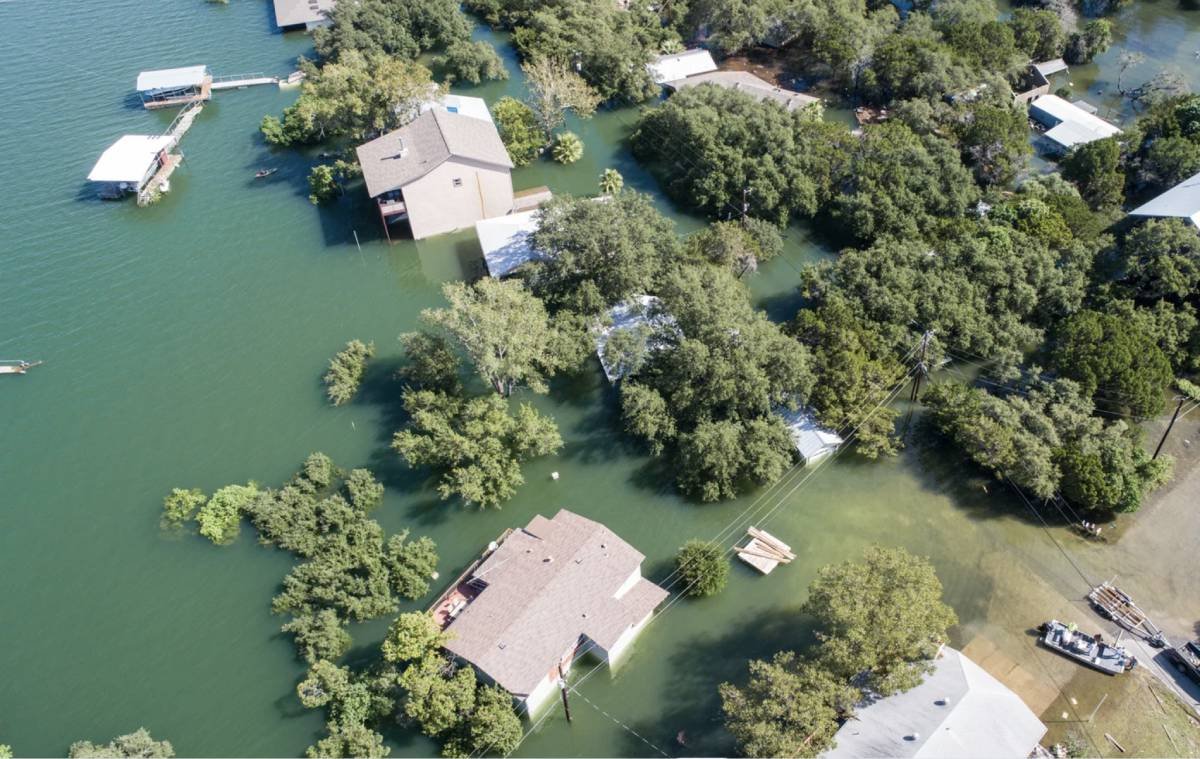
Climate Change Is Worsening Home Affordability Crisis
By Selen Ozturk, EMS
As climate change worsens, so does the home affordability crisis as insurers raise rates, withdraw coverage and underpay damages.
Even non-homeowners are affected, both by the increasing severity of U.S. climate disasters and by the spillover effect of the home insurance market on broader housing markets and local economies.
On June 7 at a Ethnic Media Services briefing, home insurance and climate policy strategists and leaders explained how this climate change insurance crisis will affect Americans’ lives, and discussed how the insurance industry, government, and Americans themselves can bring solutions.
Climate risk driving insurance unaffordability
A November 2023 report on home insurance affordability by the Insurance Research Council, a non-lobbying nonprofit, studied the nationwide affordability index through 2021. This index was found by taking homeowners’ average paid insurance premiums and dividing it by median household income, to find the share of household income dedicated to paying for home insurance.
In 2021, the most affordable state was Utah, where homeowners spent less than 1% of their income on insurance. In the least affordable, Florida, homeowners spent over 4%.
Among factors causing this range in affordability, “natural hazards, especially weather hazards, are at the top of the risk list” in terms of claim frequency and severity for disasters like hurricanes, hail, flooding and storms, said Vicky Kilgore, assistant vice president at The Insurance Research Council.
Driving home to her point, heavy rains across much of south Florida this week — with more intense rains forecast Thursday — left much of the region underwater, causing widespread damage and travel disruption, with more than 1200 flights canceled or delayed.
Kilgore added that in the 20 years up to 2021, “expenditure growth outpaced income growth by a considerable margin” for insurance spending nationwide — from 1.27% of household income in 2001 to 1.99% in 2021 — “and we predict that this number will surpass 2% when we get updated data.”
A climate-induced financial crisis?
These “challenges that climate risk is creating for insurance companies are creating the possibility of another big financial crisis like in 2008,” said Jordan Haedtler, Climate Financial Strategist with the Sunrise Project.
Alongside climate insurance-related crisis warnings in recent years by the Financial Stability Oversight Council which was created in the aftermath of 2008, “This past week, one witness in a U.S. Senate Budget Committee hearing on this drew parallels between the housing and insurance markets in Florida, and the subprime mortgage markets up to 2008, citing evidence that credit rating agencies are exaggerating the financial health of small insurers new to the Florida market. The public could be on the hook for mortgages that may have a really high risk of being underwater soon,” Haedtler explained.
The risk of an economic crisis is worsened by what U.S. Treasury Secretary deemed the “protection gap,” whereby uninsured or underinsured households and businesses unable to pay rebuilding costs abandon bank-held mortgages and loans.
The Consumer Federation of America estimates that 6.1 million U.S. homeowners representing $1.6 trillion in property values have no insurance, a number likely to grow as climate disasters intensify and more insurers withdraw policies.
“This is a major, arguably the primary way, climate change is becoming a pocketbook issue,” said Haedtler. “Earlier this year, Federal Reserve chair Jay Powell confirmed that insurance prices are driving up housing costs, a big part of why inflation remains above the federal target.”
“This is not just a problem on the coasts,” he continued. “Some of the most dramatic hazards have been from wind and hailstorms in states like Iowa and Minnesota, not just hurricanes in Florida or wildfires in California. And this is not just a problem for homeowners; landlords can and do pass on insurance costs to renters … You don’t have to wait for a crisis to see that it’s a huge issue. In a special Florida election last January, insurance was the key issue that enabled Democrats to pick up a seat that Ron DeSantis had carried by 12 points.”
What can be done?
Although lack of insurance widens economic inequality after a climate disaster, it’s also true that “disaster insurance often fails to deliver financial benefits” equitably, said Carol Kousky, associate vice president of economics and policy at the Environmental Defense Fund (EDF).
“We find that lower-income households are less likely to report finding insurance useful, and that points to affordability challenges,” she continued, including steep rates and unfair claim payouts, as well as the exclusion of certain disasters like flooding, or the exclusion of post-disaster emergency needs like generator, fuel, commuting and temporary lodging costs.
“Ever-higher climate risks are driving destabilization in the insurance market right now,” Kousky said, “and stabilizing this stress can only be done through transformative investments in risk reduction” — for example, building homes to the Institute for Building and Home Safety storm and fire standards means “your losses are a lot lower, and your insurance is lower as well.”
She also suggested legislative policy and insurance market reforms that could mitigate a climate risk-induced economic crisis, including measures like state regulators mandating baseline homeowners’ coverage policies; “micro-insurance”; community-based insurance models; simplifying the insurance claims payout process; and federal means testing for flood insurance discounts.
Policies to meet this problem are needed at the state and federal level because “Risk is now migrating from the private market into our public sector programs” intended to supplement coverage as insurance companies themselves are raising rates beyond affordability, withdrawing entirely from high-risk areas like South Florida, or going bankrupt, as a dozen Louisiana insurers have over the past few years, Koutsky added.
Solutions in California
“Insurance can no longer be an afterthought in discussions around climate and development,” said Ricardo Lara, insurance commissioner of California, which has the country’s largest insurance market. “This is why, in California, I’m doing the largest reform in over 30 years”: the state’s Sustainable Insurance Strategy.
This plan, on-track to be fully implemented by December 2024, will “strengthen the Insurance Commissioner’s authority to protect consumers and hold insurance companies to task” like expanding data used in the rate review process; improving the California FAIR Plan offering last-resort high-risk fire insurance; modernizing tools used to assess prices and risk; and using future climate risk projections alongside historical data for this assessment, explained Lara. “Climate is changing everything, and we can’t just be using historical data to tell us when we’re going to be most at risk.”
“We’re already seeing results,” he continued. “Farmers Insurance, the state’s second-largest insurer, announced that it will reopen several of its commercial coverage lines, including for HOAs, apartments and condos … Mercury Insurance is working with Tokio Marine to pick up the bulk of its personal homeowners insurance business … and this week my department authorized State Farm to offer a difference in condition policy so non-renewed policyholders have more comprehensive options than the FAIR Plan.”
“Part of climate insurance is about strengthening our natural defenses,” Lara said. “It’s much less expensive to prevent damage than to have to fix it after a disaster. So, a local community could take out an insurance policy on a wetland, for example, and restore it quickly if it is damaged. This has never been done before in the U.S., and we want to do it here in California first … in March, we adopted our first-ever National Climate Resilience Strategy for Insurance” coordinating insurance markets nationwide.
“Climate risk is really a global phenomenon,” he added. “We’ve had town halls in every county in the state, and people are scared. They don’t think about insurance until they need it. But when you talk about how climate is disrupting every part of our life and health, and why it’s risky to live here … We all must come together and figure out how we bring down the risk.” (Ethnic Media Services)



